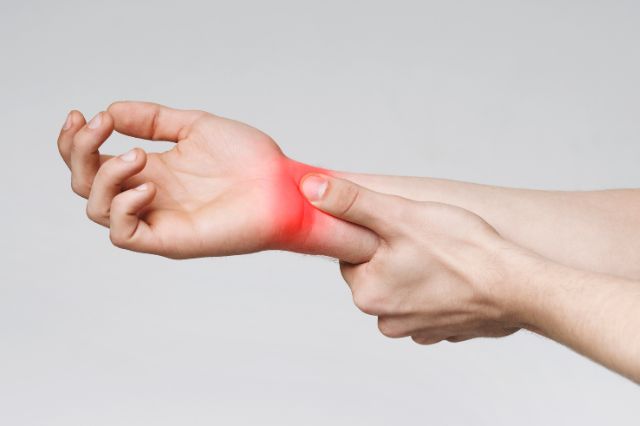7 Carpal Tunnel Syndrome Treatments

Carpal tunnel syndrome is a painful condition that affects many people. While it may seem like a hopeless condition with no solution, many treatments are available to help ease symptoms and get you back to normal activities.
Here is a look at seven carpal tunnel treatment options, from NSAIDs to endoscopic carpal tunnel release surgery.
Non-steroidal anti-inflammatory drugs (NSAIDs)
Non-steroidal anti-inflammatory drugs (NSAIDs) are commonly prescribed medications that reduce inflammation around affected areas of the body, relieving carpal tunnel-related pain and discomfort. Ibuprofen and naproxen are common NSAIDs and should be taken as directed by your doctor.
Wrist splints
Wrist splints are often used as a first-line treatment for carpal tunnel syndrome. These devices keep the wrist in a neutral position and prevent it from bending, which reduces pressure on the median nerve caused by external sources such as repetitive movements or poor ergonomics when performing tasks with the hands.
Physical therapy
A physical therapist can help design an exercise plan to improve strength, flexibility, and coordination in the hands, wrists, and arms. These exercises can be tailored to each individual’s specific needs. They will usually include stretching of the affected area and any other muscles that may affect the symptoms of carpal tunnel syndrome.
Corticosteroids
Corticosteroids are potent anti-inflammatory drugs that you can inject directly into tender parts of the wrist. This treatment can provide immediate relief from pain and swelling in severe cases of carpal tunnel syndrome by reducing inflammation around affected nerves quickly. However, this treatment method carries greater risk than more conservative forms since multiple injections are usually required to see results, so it is not considered a long-term solution.
Acupuncture
Acupuncture is an ancient Chinese therapy that involves the insertion of needles into specific points of the body. Applying needles to particular points associated with carpal tunnel syndrome can help reduce inflammation around nerves and promote the relaxation of hand muscles, improving the functionality of the hands, wrists, and arms.
Stretching and yoga
Stretching and yoga can help improve flexibility and reduce tension in your hands and wrists. Stretching exercises and yoga aimed at loosening up tight muscles in the wrists and arms may also relieve carpal tunnel syndrome symptoms by creating space between tissues that would otherwise press against each other, leading to increased pressure on sensitive tissues and nerves.
Surgery
Surgery is usually considered a last resort for carpal tunnel syndrome treatment. The procedure involves cutting the ligament that is pressing on the median nerve to release pressure placed on sensitive nerves and restore motor functions in severely damaged areas due to depleted blood flow caused by prolonged strain. Surgery is usually successful in relieving the symptoms of carpal tunnel syndrome, but it does require a recovery period.
Wrap up
Carpal tunnel syndrome can be painful and debilitating, but you can manage it with the proper treatment. Non-invasive methods such as NSAIDs, wrist splints, physical therapy, stretching, and yoga can be effective in the condition’s early stages. In contrast, you can use more invasive methods such as corticosteroids, acupuncture, and surgery in more severe cases. If you are experiencing symptoms of carpal tunnel syndrome, it is vital to seek medical attention and determine the best treatment for your needs. With proper care and management, you can reduce your pain and get back to your daily activities.





